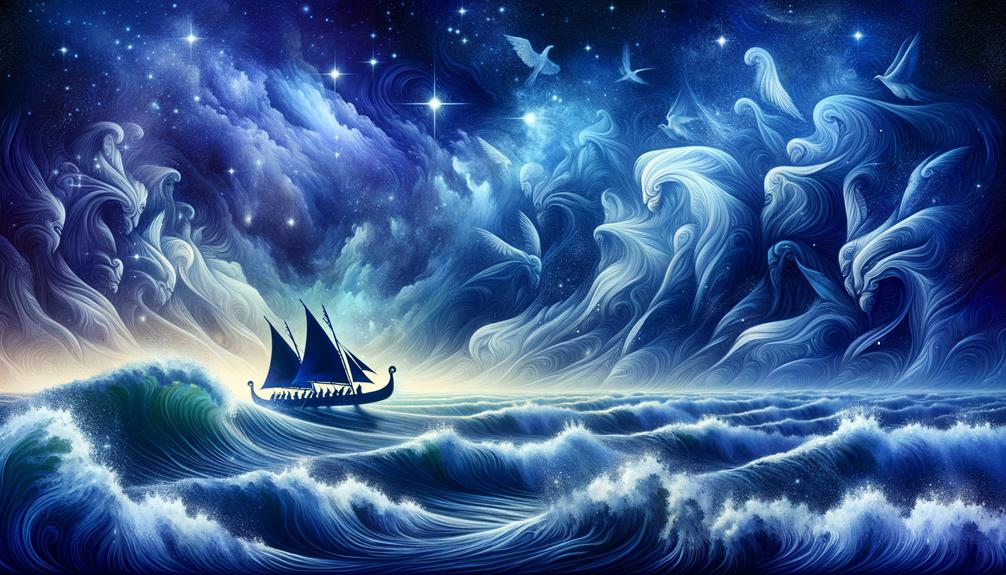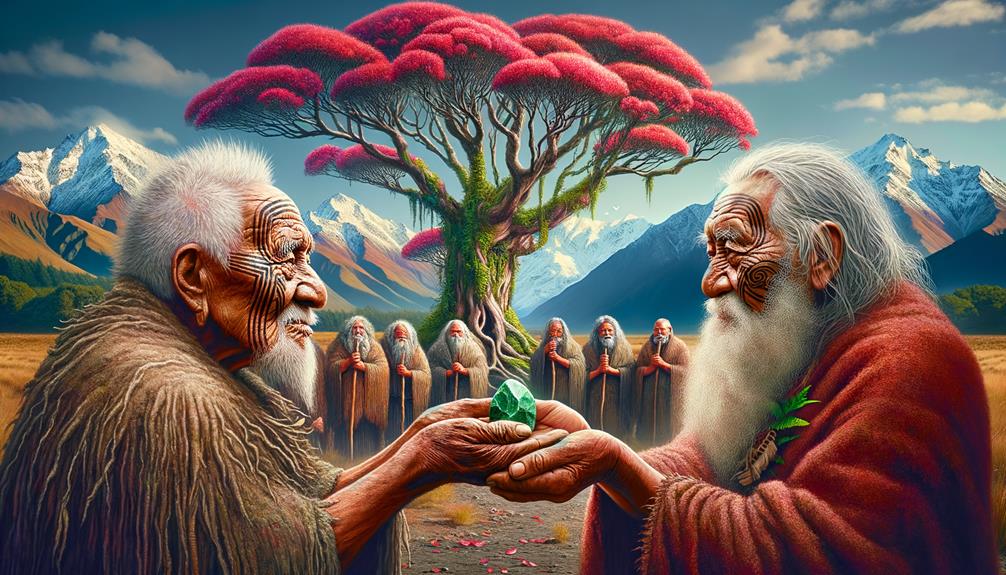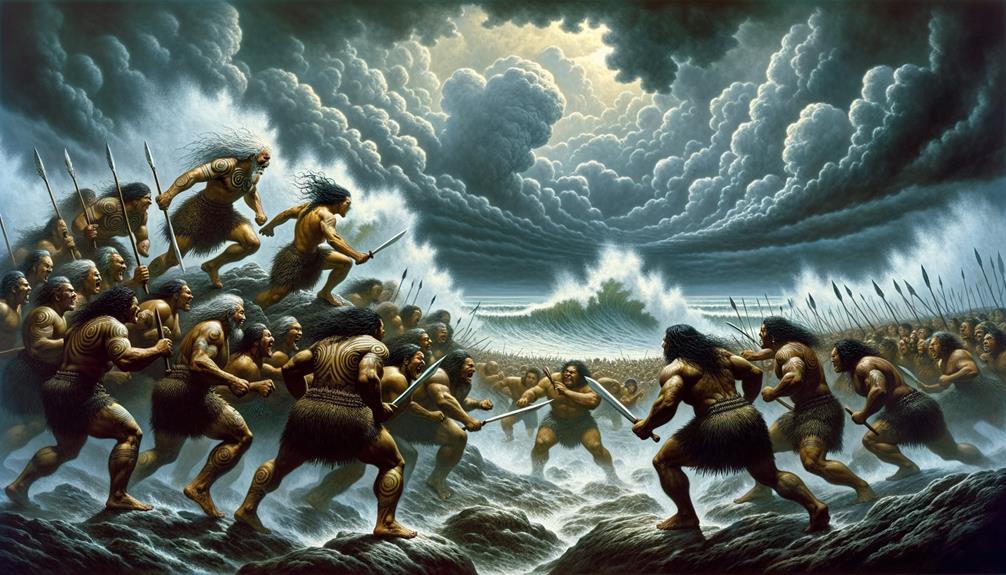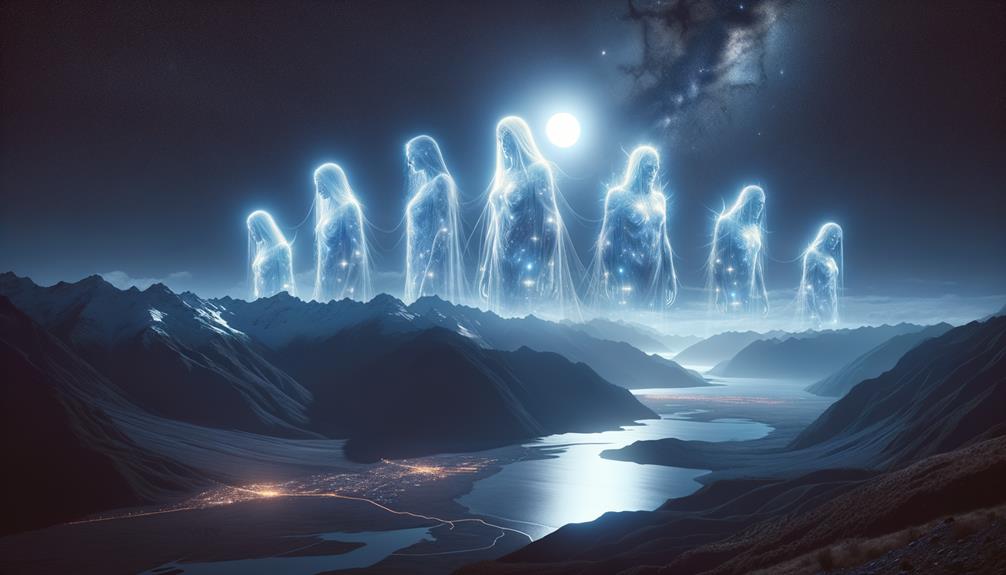The history of Ngāi Tahu is richly steeped in myths and legends, taking us all the way back to ancestral figures like Tahupōtiki and the mythical Paikea. Their stories of courageous voyages fundamentally changed the patterns of migration across Aotearoa. Important personalities like Tūhaitara and Kurī were instrumental in shaping the tribe's cultural journey. The tribe's story is closely interwoven with other tribes, such as Te Rapuwai and Waitaha, leaving deep cultural impacts. The bond with Waitaha is especially close, affecting traditions, spiritual views, and land rights. Interactions, and at times confrontations, with other tribes, notably NgāTi Toa, have been defining factors in their history. These ancestral narratives give us a captivating glimpse into the past of Ngāi Tahu and its impact on their present-day identity. There's always more to learn if we delve deeper into their history.
Origins of Ngāi Tahu Ancestors
Let's talk about the origins of the Ngāi Tahu ancestors. Their story begins with the legendary brothers Tahupōtiki and Tahumatua, who are descendants of the mythical Paikea. Tahupōtiki's adventure to the South Island is a key part of their early history. He was the one who guided the Tākitimu waka, laying the groundwork for the migration routes that would determine the fate of the Ngāi Tahu people.
This migration brought them into contact with different tribes, resulting in a blend of unique cultural practices that came to define the Ngāi Tahu identity. Of course, it wasn't all smooth sailing. The expulsion of Rākaihikuroa was a significant event that affected early Ngāi Tahu history by altering their migration routes and territorial expansion.
Key figures from this era include Tūhaitara and Kurī, whose families played critical roles in forming Ngāi Tahu's early history. Their influence wasn't only about leadership, but also involved contributing to the territorial expansion and cultural growth of Ngāi Tahu. Thanks to their actions and decisions, the tribe grew, learning to thrive in new environments, adopting and adapting cultural practices, and establishing a strong presence in the South Island.
The Mythical Journey South

Let's take an interesting turn and head south, where the Ngāi Tahu people trace their roots back to legendary figures. One of them is Hawea-i-te-raki, whose father was the chief Waitaha-Ariki. The Ngāi Tahu journey to the South Island wasn't a solitary affair – tribes like Te Rapuwai and Waitaha joined in, setting up new homes and blending into the lineage.
The legends paint a vivid picture of Hawea's people, pointing out unique features such as curly hair and white teeth. If you dig into the history of Te Rapuwai, you would find links to Polynesian roots, showing that the Ngāi Tahu's mythic ancestors came from diverse backgrounds. And then there's the Waitaha tribe, the third to arrive in the South Island. They set up homes at various spots, including the mouth of the Molyneux River and Te Anau, adding more threads to the ancestral fabric.
The southward journey also marked the arrival of Kāti Mamoe. They played a key role, carving their niche in the region before the Kāi Tahu conquest. Their interactions with other tribes left an indelible imprint on the cultural scene.
Ngāi Tahu and Waitaha Connection

Let's take a friendly journey into the intertwined history of the Ngāi Tahu and Waitaha tribes. It's fascinating to see how these two tribes became so closely woven together. This wasn't just a matter of marriage alliances – they started to adopt each other's customs and spiritual beliefs, too. This blending of cultures went beyond just family ties and had a profound impact on each tribe's way of life.
Have you ever thought about how a tribe's history can be etched into the landscape? That's exactly what happened with the Waitaha. Their lineage was marked out on the land, a concept that resonated with the Ngāi Tahu's own understanding of their surroundings. As a result, this bond with the land played a huge role in shaping their settlements, as we can see from the Ngāi Tahu's choice to settle in Kaiapoi pā. The tribe then expanded southward and westward, adopting aspects of Waitaha culture into their day-to-day living.
The Waitaha had a unique way of understanding the world – they saw natural phenomena as their ancestors. This belief had a profound influence on the Ngāi Tahu's own environmental philosophy. For example, they started interpreting wind patterns through the lens of ancestral stories, a testament to the deep bond between the Ngāi Tahu and Waitaha traditions.
Wars and Conflicts With NgāTi Toa

During the 1820s and 1830s, a less harmonious relationship developed between the Ngāi Tahu tribe and the Ngāti Toa tribe. This time was characterized by heated conflicts, largely caused by disagreements over land ownership and the competition for resources.
Two significant moments were the Battle of Tua Marina and the Battle of Wairau. These clashes served as key turning points in the relationship between the Ngāi Tahu and Ngāti Toa tribes. More than just military confrontations, these battles mirrored the larger dispute over regional territorial boundaries.
The Ngāi Tahu weren't just bystanders during this tumultuous time. Instead, they were active participants, shaping their own destiny with tactical alliances and military tactics. They skillfully navigated the intricate tribal interactions, playing a pivotal role in these conflicts.
The Ngāi Tahu Land Claim

The Ngāi Tahu Land Claim is a significant part of the tribe's history. It started in the 1870s, primarily due to the tribe's dissatisfaction with land purchases. This claim became a landmark event in the history of the Treaty of Waitangi settlements in New Zealand. It was a testament to the tribe's resilience and their relentless pursuit of justice for the historical injustices they suffered.
In this process, the Waitangi Tribunal played a key role. They brought the tribe's grievances into the spotlight and helped to negotiate a comprehensive settlement. The culmination of this process was the passing of the Ngāi Tahu Claim Settlement Act in 1998, a notable point in the tribe's history. This act provided:
- Acknowledgement of the tribe's grievances,
- Compensation for their losses,
- Measures to revitalize their cultural practices.
This settlement did more than just recognise the historical injustices faced by the tribe. It also laid the foundation for Ngāi Tahu's growth and cultural resurgence. Today, the tribe's resilience in overcoming adversity serves as a powerful reminder of the strength of perseverance and the importance of addressing historical wrongs.
Frequently Asked Questions
Who Are the Ancestors of NgāI Tahu?
Wondering who the forebears of Ngāi Tahu are? Their roots can be traced back to the siblings Tahupōtiki and Tahumatua, who were descendants of Paikea. Their heritage is also deeply interlinked with notable personalities such as Tūhaitara and Kurī.
What Are the Sub-Tribes of NgāI Tahu?
I've delved into the study of the sub-tribes of Ngāi Tahu. There are three main ones to note: Kāti Huirapa, Kāti Māmoe, and Waitaha. Each one carries unique lineages, territories, and plays significant roles in the multifaceted history and governance of Ngāi Tahu. It's truly an intriguing subject.
What Species Are in NgāI Tahu Treasures?
The treasures of the Ngāi Tahu tribe are rich in cultural significance, featuring species like the kōwhai tree, harakeke, and pounamu. These are not just treasures, but integral parts of the tribe's everyday life – used in carving, weaving and spiritual practices. These elements highlight the tribe's profound bond with nature and are a testament to their cultural identity. It's more than just an appreciation for nature, it's a deep-rooted respect and understanding for the environment that defines them.
What Is the Difference Between Ngati and Ngai?
In the world of Māori culture, the terms 'Ngati' and 'Ngai' carry different meanings. When we talk about 'Ngati', we're referring to a tribe or maybe a sub-tribe, and this is often linked to a specific place. On the other hand, 'Ngai' is a term that points to a direct line of descent from a particular ancestor or group. This difference is key when discussing Māori tribal matters.


